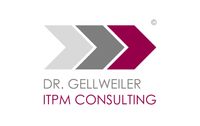IT Alignment
The IT Alignment Model
Project portfolio management (PPM) and enterprise architecture management (EAM) denote central practices of IT alignment. The overall objective of PPM is to maximize value from the total investment budget of an enterprise. The realization of business value is a measure of portfolio success. EAM shapes long-term IT architectures and draws high-level technology plans. EAM plans IT systems over their lifecycles, from introduction to phase-out.
The IT alignment model integrates PPM, EAM, and business strategy management (SM) for IT strategic planning. The IT alignment model includes three alignment processes:
- Business-project alignment between PPM and strategy management (SM). PPM is involved in the business strategic planning process for analytical reasons (foremost value creation, dependencies, and risks) and to help filter and prioritize project proposals based on business needs.
- Business-IT alignment between EAM and strategy management (SM). EAM links the business architecture (e.g., capabilities, organization, processes) and the IT architecture (e.g., IT infrastructure, IT applications, data) and must ensure their consistency for the current state (as-is) and the future position (to-be). EAM also inspires the business strategy in view of new technologies and digital innovations.
- IT-project alignment between PPM and EAM. The analytical results from PPM and EAM are combined to propose, select, prioritize, and schedule all projects. Scheduled projects receive budgets and resources for implementation. PPM and EAM draft together a long-range timescale, which is referred to as a roadmap. It harmonizes priorities, considers dependencies, and places IT projects accordingly. Roadmapping closes the strategic alignment loop.

